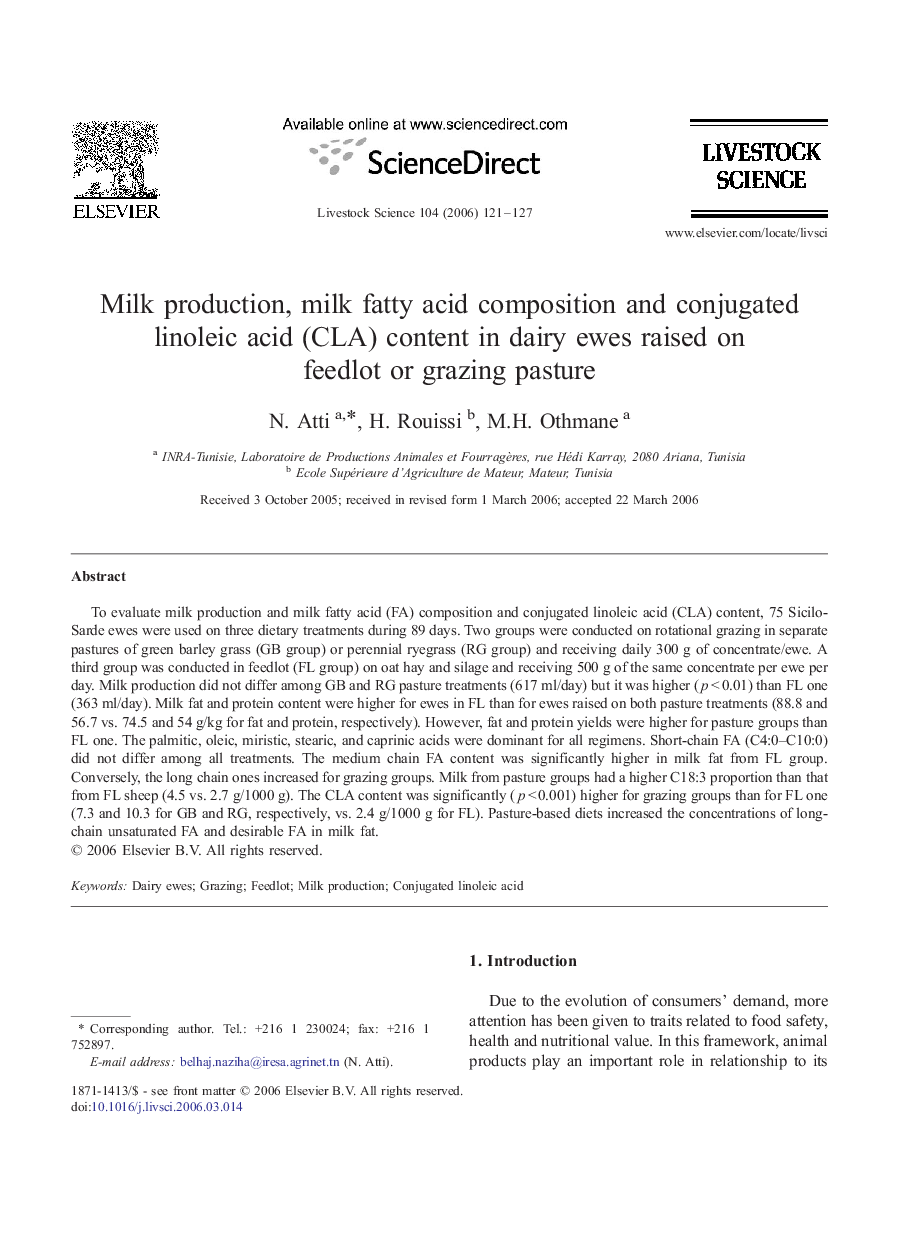| Article ID | Journal | Published Year | Pages | File Type |
|---|---|---|---|---|
| 2448832 | Livestock Science | 2006 | 7 Pages |
To evaluate milk production and milk fatty acid (FA) composition and conjugated linoleic acid (CLA) content, 75 Sicilo-Sarde ewes were used on three dietary treatments during 89 days. Two groups were conducted on rotational grazing in separate pastures of green barley grass (GB group) or perennial ryegrass (RG group) and receiving daily 300 g of concentrate/ewe. A third group was conducted in feedlot (FL group) on oat hay and silage and receiving 500 g of the same concentrate per ewe per day. Milk production did not differ among GB and RG pasture treatments (617 ml/day) but it was higher (p < 0.01) than FL one (363 ml/day). Milk fat and protein content were higher for ewes in FL than for ewes raised on both pasture treatments (88.8 and 56.7 vs. 74.5 and 54 g/kg for fat and protein, respectively). However, fat and protein yields were higher for pasture groups than FL one. The palmitic, oleic, miristic, stearic, and caprinic acids were dominant for all regimens. Short-chain FA (C4:0–C10:0) did not differ among all treatments. The medium chain FA content was significantly higher in milk fat from FL group. Conversely, the long chain ones increased for grazing groups. Milk from pasture groups had a higher C18:3 proportion than that from FL sheep (4.5 vs. 2.7 g/1000 g). The CLA content was significantly (p < 0.001) higher for grazing groups than for FL one (7.3 and 10.3 for GB and RG, respectively, vs. 2.4 g/1000 g for FL). Pasture-based diets increased the concentrations of long-chain unsaturated FA and desirable FA in milk fat.
